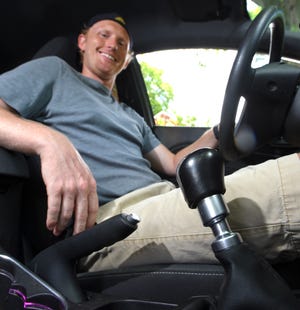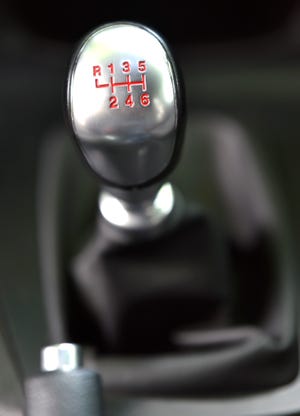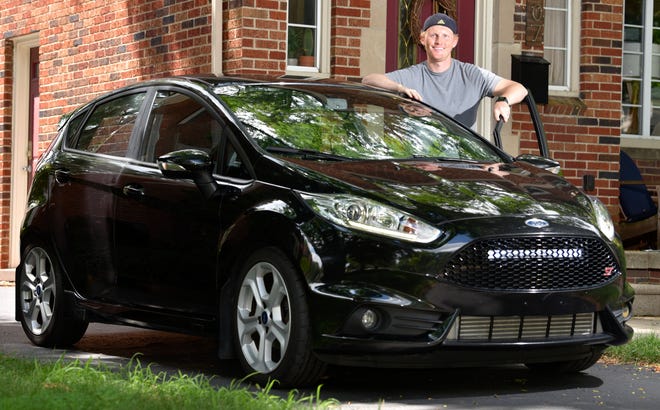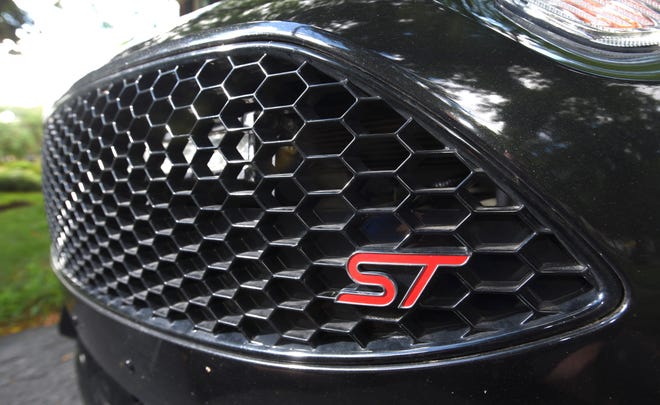#SaveTheManual: More cars steer away from stick shifts
Posted by Talbot Payne on August 12, 2020
The manual transmission continues to go the way of the hand-crank window.
Several more vehicles — including the popular Jeep Compass and Honda Accord — will no longer have stick-shift options after the 2020 model year.
The continuing trend toward automatic transmissions is driven not only by ease of use: In many cases, automatics now get better gas mileage than their stick-shift counterparts. Adding to the decline is the phase-out of small, entry-level sedans that traditionally have offered manual transmissions as budget options.

Auto enthusiasts have rallied behind the hashtag #SaveTheManual, but it’s not just entry-level SUVs and sedans that are stiffing sticks. High-end sports cars in the pursuit of more speed are also turning their backs on manuals. Two of the highest-profile performance-car launches in 2020, the Ford Mustang GT500 and mid-engine Chevy Corvette, debuted without a three-pedal option.
“Track- and drag strip-focused sports cars are focused on pushing the envelope, and manuals just make no sense,” said Michael Fiske, IHS Markit principal auto analyst. “Dual-clutch transmissions in cars like the Mustang are crowding out the manual, because if you really want to shave tenths off your quarter-mile time, you need an automatic.”
Fiske says manuals are increasingly the domain of small, affordable performance cars that owners enjoy for the driving experience. The Mazda MX-5 Miata and Toyota 86, for example, are synonymous with stick shifts.

“Manuals let you write your own story,” said M1 Concourse chief instructor Alex Della Torre, 47, who owns three Mazda MX-5s. “If you want to max out your revs, you have that power.”
Yet even popular performance cars such as the stick-shift Ford Fiesta ST and Focus ST have been yanked from the U.S. market, a casualty of the relentless upshift from cars to SUVs.
James Carl, 30, of Royal Oak owns a 2015 Fiesta ST. He was raised on sticks, having previously driven a now-defunct Mazda RX-8 and Bronco II.
“I like the control of a stick. I like to know what gear I’m in and the ability to choose whatever gear I want in a particular situation,” he said. “An automatic doesn’t give you that choice.”
He laments the loss of the subcompact Fiesta ST — its last model year was 2019 (the compact Focus ST died in 2018). Ford’s ST performance badge continues on in sport utilities like the Explorer and Edge — but without the option of a stick.
A Ford partisan, Carl said his only choices going forward are the Mustang muscle car (he races one), and the forthcoming Bronco SUV, which will have a manual option.
Like some pickups and the Jeep Wrangler, the Bronco’s off-road performance promises to attract manual enthusiasts. That’s rare in an SUV. More typical is the Jeep Compass, for which just 7.7% of buyers go for the manual.
SUVs like the Compass have replaced cars like the Focus and Fiesta as entry-level vehicles, which were typically offered as base manual models because the stick’s $1,000 to $1,500 savings attracted cash-strapped customers.

But, say analysts, stiffer fuel economy rules mandated over the last decade made already low profit-margin small cars even more costly to produce.
“The EPA mileage rules really made it hard for small sedans to meet emissions standards. It’s easier to hit the mpg mark with SUVs because the rules treat them differently,” said IHS Markit’s Fiske, an industry veteran. Plus, he said, SUVs have higher profit margins.
Even the take-rate for manuals on Mustangs is just 9.1% as the marque has developed a smooth-shifting, 10-speed automatic. Mustang rival Chevy Camaro’s manual take rate is a paltry 1.4%. Ford now targets its manual Mustang offerings at special, upper-trim models such as the GT350, Bullitt and forthcoming Mach 1.
The top-trim Mustang, the ferocious 760-horsepower 2020 GT500, shocked enthusiasts when it skipped the stick and introduced the pony-car kingdom’s first dual-clutch, seven-speed automatic. That’s because even the best drivers will not be as fast on the track with a manual transmission.
The GT500’s tradition-busting move was followed by the 2020 Corvette, the first ‘Vette to put the engine behind the driver — and ditch the stick. The car’s eight-speed, dual-clutch automatic is staggeringly quick (performing shifts in under 100 milliseconds), allowing sub-3-second, zero-to-60 times. Try that with a manual.
Amateur racer and stick-shift fan Steve Nowicki, 61, of West Bloomfield isn’t interested in a manual muscle car. He drives an automatic Ford F-150 to work but has a stick-shift Miata for play.
“Stick shifts are more manageable with restrained horsepower,” he said. “My Miata is just fun to drive. It’s my summer, let’s-just-go-for-a-ride car.”
Vaunted sports car maker Porsche has flirted with eliminating the stick shift from its flagship 911, but pushback from core enthusiasts means it’s still offered on upper trims like the S and 4S models for 2021. For the entire 911 model line, manuals are chosen by a mere 2.7% of customers.
At the entry-level end of the market, performance brands like Mazda now dangle manuals at enthusiasts willing to pay more for the feature, rather than budget-conscious buyers. The $22,445 Mazda 3 compact offers the manual only its fully loaded Premium hatchback model, starting at $28,420.
Mazda now only offers a stick-shift in its Mazda 3 and MX-5 Miata, having ditched the three-pedal option in its sporty, mid-size 6 sedan after 2019.

The Honda Accord, a competitor to the Mazda 6, will follow suit by discontinuing its stick option after the current model year. Other sticks are leaving the market at year’s end because their model lines have been axed. They include the Fiat 124, Honda Fit, Toyota Yaris and Chevrolet Sonic.
Only 0.8% of Accord buyers opted for a manual. Honda, a driver’s brand with deep roots in racing, has found more success in its compact Civic model with a take rate of 9%.
Even the manuals’ once-vaunted advantage over automatics in fuel economy has dissipated. An automatic Civic with a 1.5-liter engine, for example, gets 33 mpg compared to 30 mpg for the comparable manual version.
M1 Concourse’s Della Torre, however, sees one clear advantage for manual transmissions.
“You don’t have time to text and drive,” he said. “You are forced to focus on driving alone.”


